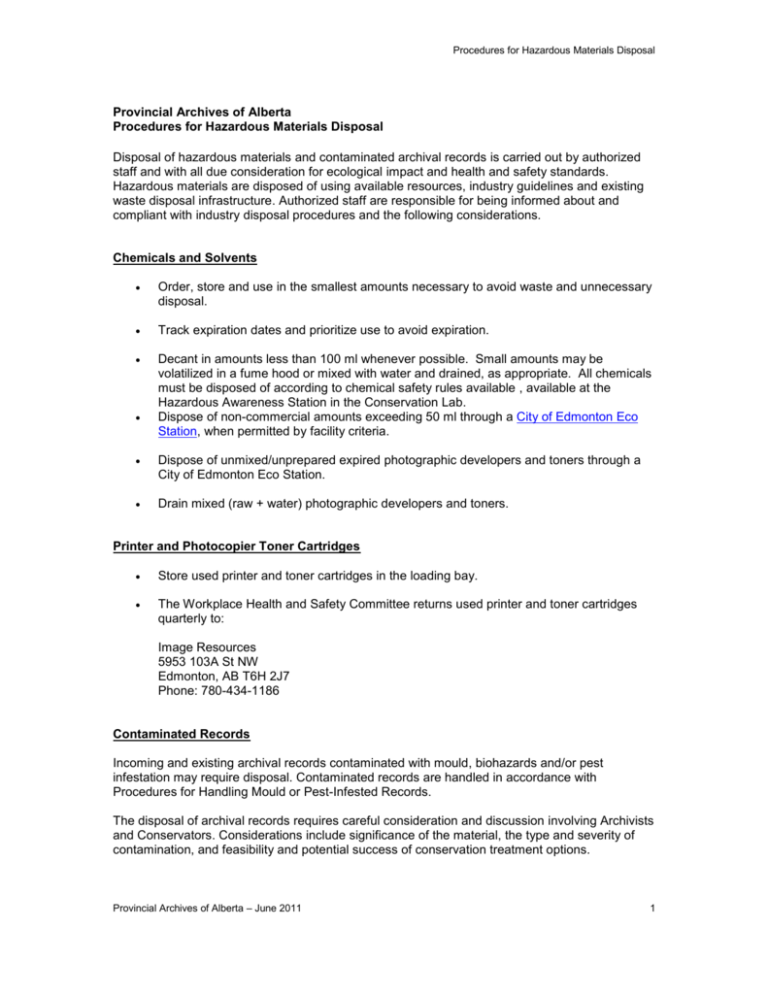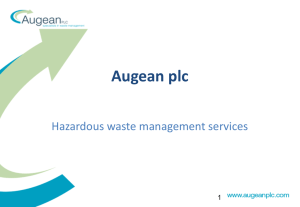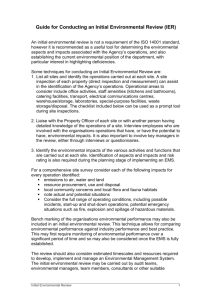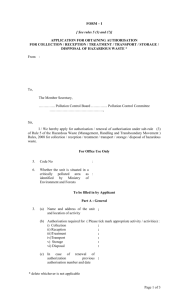Procedures for Hazardous Materials Disposal
advertisement

Procedures for Hazardous Materials Disposal Provincial Archives of Alberta Procedures for Hazardous Materials Disposal Disposal of hazardous materials and contaminated archival records is carried out by authorized staff and with all due consideration for ecological impact and health and safety standards. Hazardous materials are disposed of using available resources, industry guidelines and existing waste disposal infrastructure. Authorized staff are responsible for being informed about and compliant with industry disposal procedures and the following considerations. Chemicals and Solvents Order, store and use in the smallest amounts necessary to avoid waste and unnecessary disposal. Track expiration dates and prioritize use to avoid expiration. Decant in amounts less than 100 ml whenever possible. Small amounts may be volatilized in a fume hood or mixed with water and drained, as appropriate. All chemicals must be disposed of according to chemical safety rules available , available at the Hazardous Awareness Station in the Conservation Lab. Dispose of non-commercial amounts exceeding 50 ml through a City of Edmonton Eco Station, when permitted by facility criteria. Dispose of unmixed/unprepared expired photographic developers and toners through a City of Edmonton Eco Station. Drain mixed (raw + water) photographic developers and toners. Printer and Photocopier Toner Cartridges Store used printer and toner cartridges in the loading bay. The Workplace Health and Safety Committee returns used printer and toner cartridges quarterly to: Image Resources 5953 103A St NW Edmonton, AB T6H 2J7 Phone: 780-434-1186 Contaminated Records Incoming and existing archival records contaminated with mould, biohazards and/or pest infestation may require disposal. Contaminated records are handled in accordance with Procedures for Handling Mould or Pest-Infested Records. The disposal of archival records requires careful consideration and discussion involving Archivists and Conservators. Considerations include significance of the material, the type and severity of contamination, and feasibility and potential success of conservation treatment options. Provincial Archives of Alberta – June 2011 1 Procedures for Hazardous Materials Disposal The Alberta Records Centre (ARC), Service Alberta, manages the disposal of contaminated Government of Alberta records to avoid the transfer of hazardous material to the Archives. The ARC provides guidelines and support for the safe disposal of all archival records: Documents with water damage that are still wet with no visible mould (less than 48 hours): Re-box or bag. Transfer to: Rip n Shred Inc. 4606 - 90A Avenue Edmonton, Alberta T6B 2P9 Phone: 780-474-7373 Fax: 780-450-1483 E-Mail: info@ripnshred.com Documents with water damage that may or may not be wet, with visible mould (within one to two weeks of initial water damage): o Double bag and identify as contaminated. Transfer to Rip n Shred Inc., with prior notification sent indicating contamination. Documents heavily contaminated with pest (rodent) activity, biohazards or mould: o Transfer to an industrial waste management specialist. Recommended companies: GFM Environmental Services 17559 108 Avenue Edmonton, Alberta T5S 1G2 Phone: 780-482-0986 Fax: 780-482-1676 G-M Pearson Biomedical Waste Specialists 2333 119 Avenue Edmonton, AB T6S1A9 Phone: 780-473-6633 Fax: 780-475-9143 Hazardous Items Hazardous archival items associated with Government of Alberta court records include ammunition, weapons, and drugs and drug paraphernalia. These items are removed and disposed of as follows: Firearms: Transfer to the Royal Alberta Museum. Knives, ammunition, drugs and drug paraphernalia: Transfer to the Edmonton Police Service. Provincial Archives of Alberta – June 2011 2







